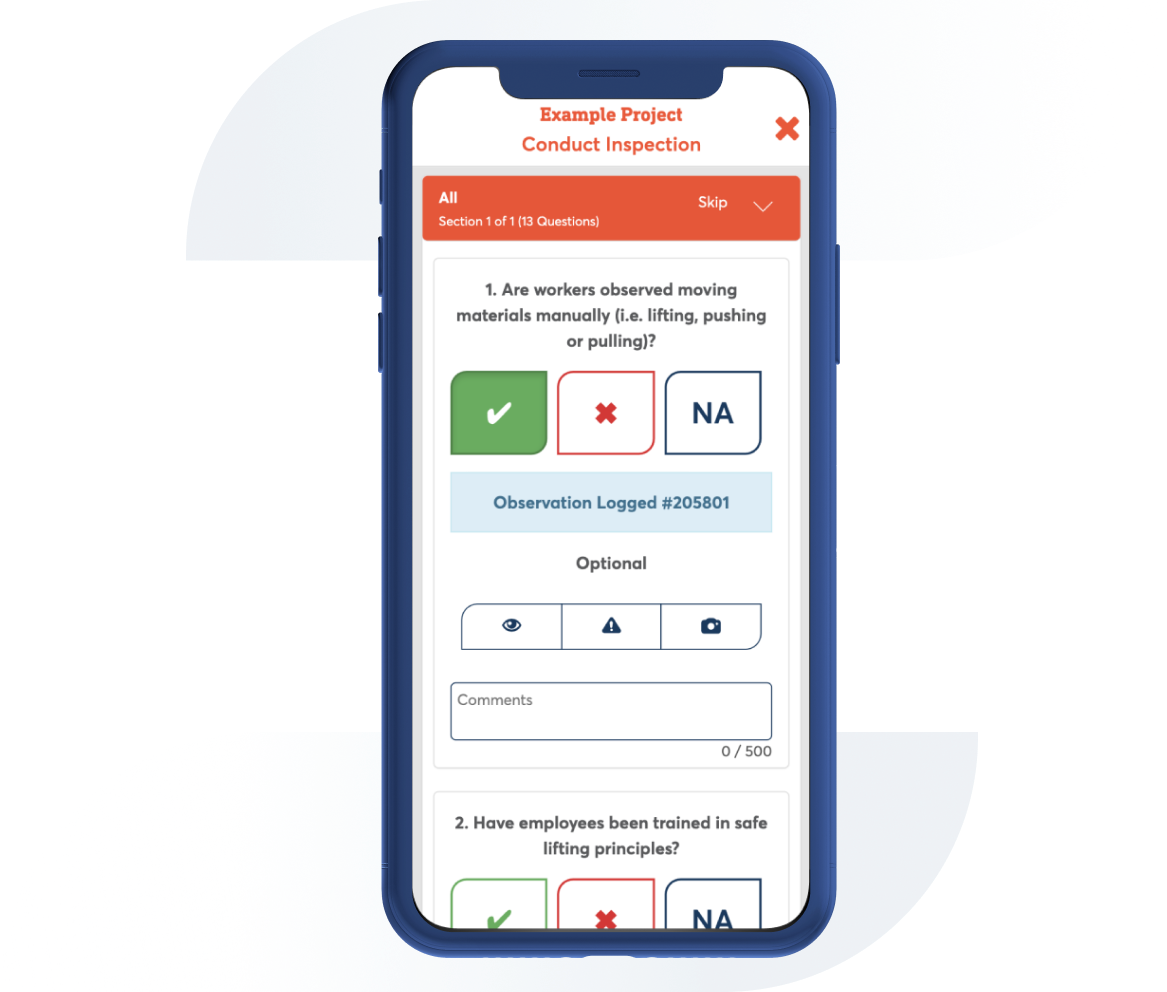OSHA Agricultural Equipment Guards and Shields Safety Checklist
Contributor: Safesite Jurisdiction: OSHA
Follow this OSHA checklist to ensure guards and shields on agricultural machinery are designed to withstand force and are located to protect employees from inadvertent hazards with field equipment.

Template Preview
1. Employees are trained to recognize the signs and symptoms of heat illness and to inform their supervisor immediately.
Actions
2. All guards are observed to be in place during machine operation.
Actions
3. Operators of farm field equipment are observed permitting riders other than those required for instruction or assistance in machine operations.
Actions
4. Operators of farm field equipment are observed stopping the engine, disconnecting the power source and waiting for machine movement to stop before servicing, adjusting, cleaning, or unclogging the equipment (unless the machine is required to run for proper servicing and maintenance).
Actions
5. Operators have been properly instructed as to all steps and procedures necessary to safely service and maintain equipment which must be running to be properly serviced or maintained.
Actions
6. Employees are observed to lock out electrical power before performing maintenance or service on farmstead equipment.
Actions
7. Employees are protected from coming into contact with hazards created by moving machinery parts by guards, shields or use of guardrails or fences.
Actions
8. Guards and shields are designed and located so as to protect employees from inadvertent contact with the hazard being guarded.
Actions
9. Guards and shields are designed to withstand the force that a 250 pound individual could exert by falling or leaning against the guard.
Actions
10. Guards are observed to be free from burrs, sharp edges and sharp corners and are securely fastened to the equipment or structure.
Actions
11. All power take-off shafts, including rear, mid- or side-mounted shafts, are observed to be guarded either by a master shield or by other protective guarding.
Actions
12. Signs or labels are observed at prominent locations on power take-off driven equipment specifying that power drive system safety shields must be kept in place.
Actions
13. Signs or labels are observed to be in place at prominent locations on tractors and power take-off driven equipment specifying that power drive system safety guards and shields must be kept in place.
Actions
14. The mesh or nip-points of all power driven gears, belts, chains, sheaves, pulleys, sprockets, and idlers are observed to be guarded.
Actions
15. All revolving shafts, including projections such as bolts, keys, or set screws, are observed to be guarded, (Except smooth shaft ends protruding less than one-half the outside diameter of the shaft and its locking means.)
Actions
16. Functional components, such as snapping or husking rolls, straw spreaders and choppers, cutterbars, flail rotors, rotary beaters, mixing augers, feed rolls, conveying augers, rotary tillers, and similar units, are observed to be guarded to the fullest extent which will not substantially interfere with normal functioning of the component.
Actions
17. Functional components, such as choppers, rotary beaters, mixing augers, feed rolls, conveying augers, grain spreaders, stirring augers, sweep augers, and feed augers, which must be exposed for proper function, are observed to be guarded to the fullest extent which will not substantially interfere with the normal functioning of the component.
Actions
18. Material handling gratings: The largest dimensions or openings in grating type guards through which materials are required to flow is observed to be 4 3/4 inches and the area of each opening is observed to be no larger than 10 square inches. The opening is observed to be located no closer to the rotating flighting than 2 1/2 inches.
Actions
19. Slotted openings in solid baffle style covers are observed to be no wider than 1 1/2 inches, or closer than 3 1/2 inches to the exposed flighting.
Actions
20. For power supplies not in the immediate exclusive control of the employee, there is observed to be an exclusive, positive locking electrical disconnecting means which can be operated only by the employee or employees performing maintenance or servicing;
Actions
21. For power transmission components of cotton ginning equipment; The main drive and miscellaneous drives of gin stands are observed to be completely enclosed, guarded by location, or guarded by railings. Drives between gin stands are observed to be guarded so as to prevent access to the area between machines.
Actions
22. For power transmission components of cotton ginning equipment; When guarded by railings, any hazardous component within 15 horizontal inches of the rail are observed to be completely enclosed. Railing height is observed to be approximately 42 inches off the floor, platform, or other working surface, with a midrail between the top-rail and the working surface.
Actions
23. Projecting shaft ends not guarded by location are observed to present a smooth edge and end, are guarded by non-rotating caps or safety sleeves, and do not protrude more than one-half the outside diameter of the shaft.
Actions
24. Balers are observed to have an interlock shall be installed so that the upper gates cannot be opened while the tramper is operating.
Actions
25. All accessible screw conveyors are observed to be guarded by substantial covers or gratings, or with an inverted horizontally slotted guard of the trough type, which will prevent employees from coming into contact with the screw conveyor.
Actions
26. Gin Warning device. A warning device with an audible signal is installed and functional on all gins which will indicate to employees that any or all of the machines comprising the gin are about to be started.
Actions

Can't find what you are looking for?
